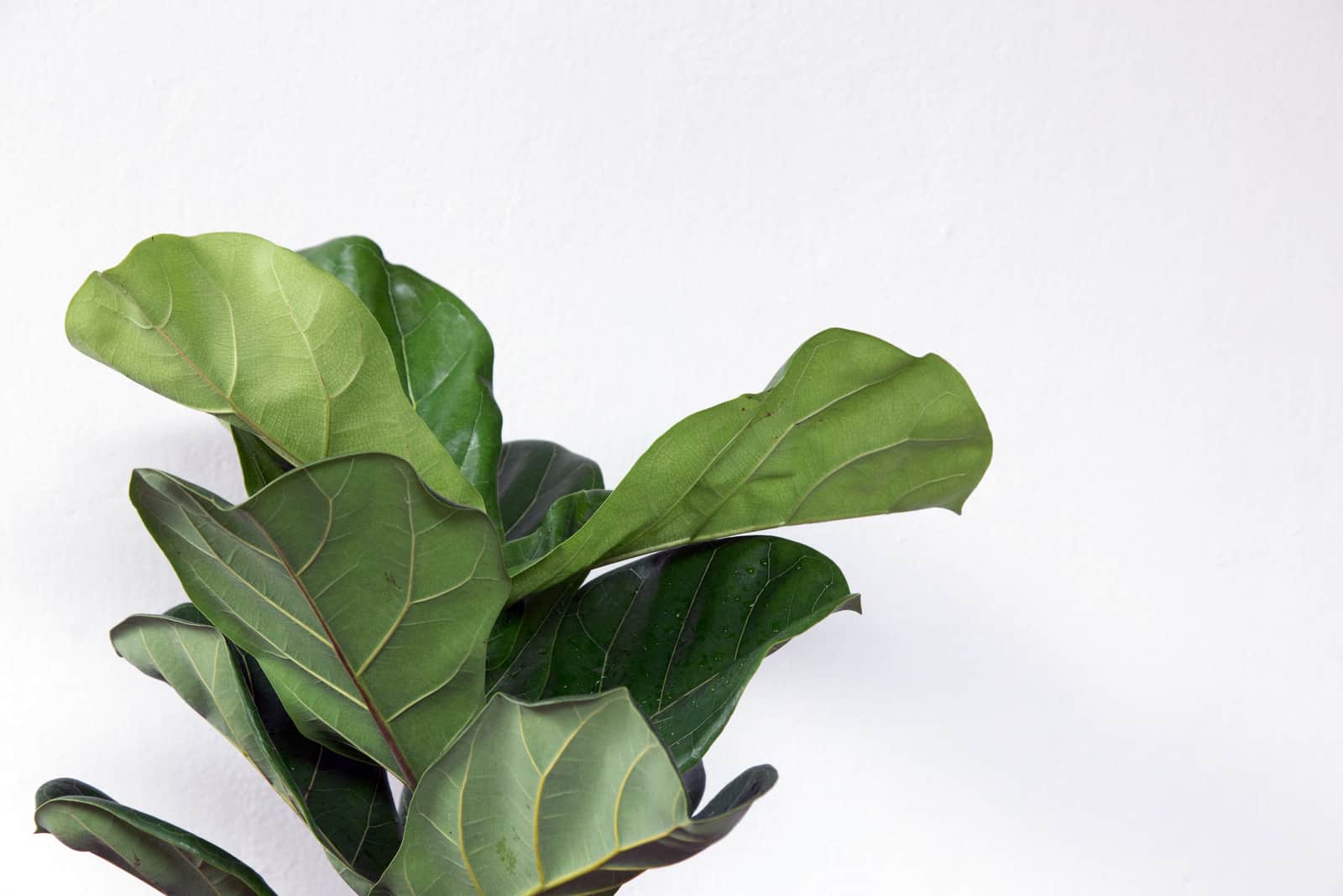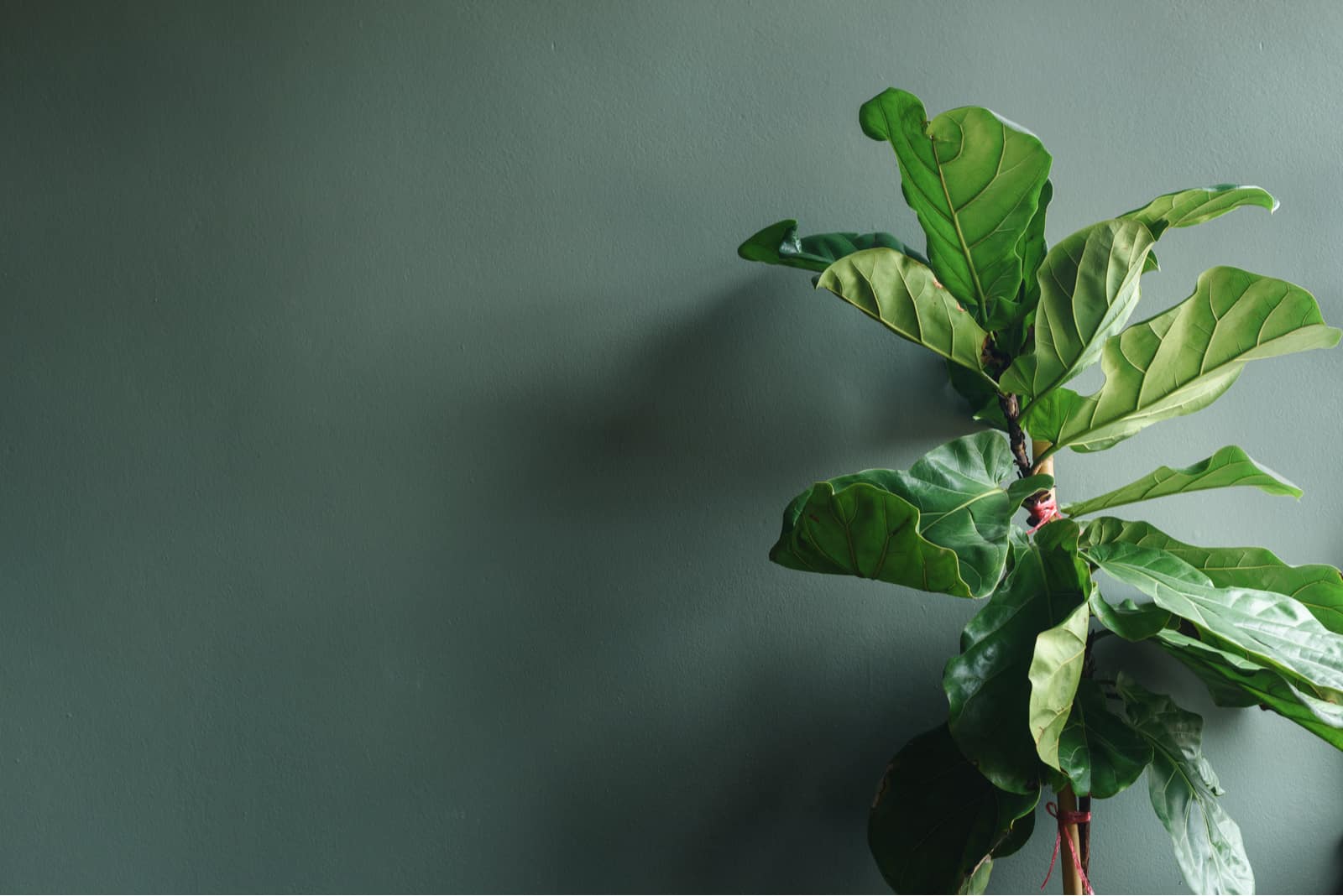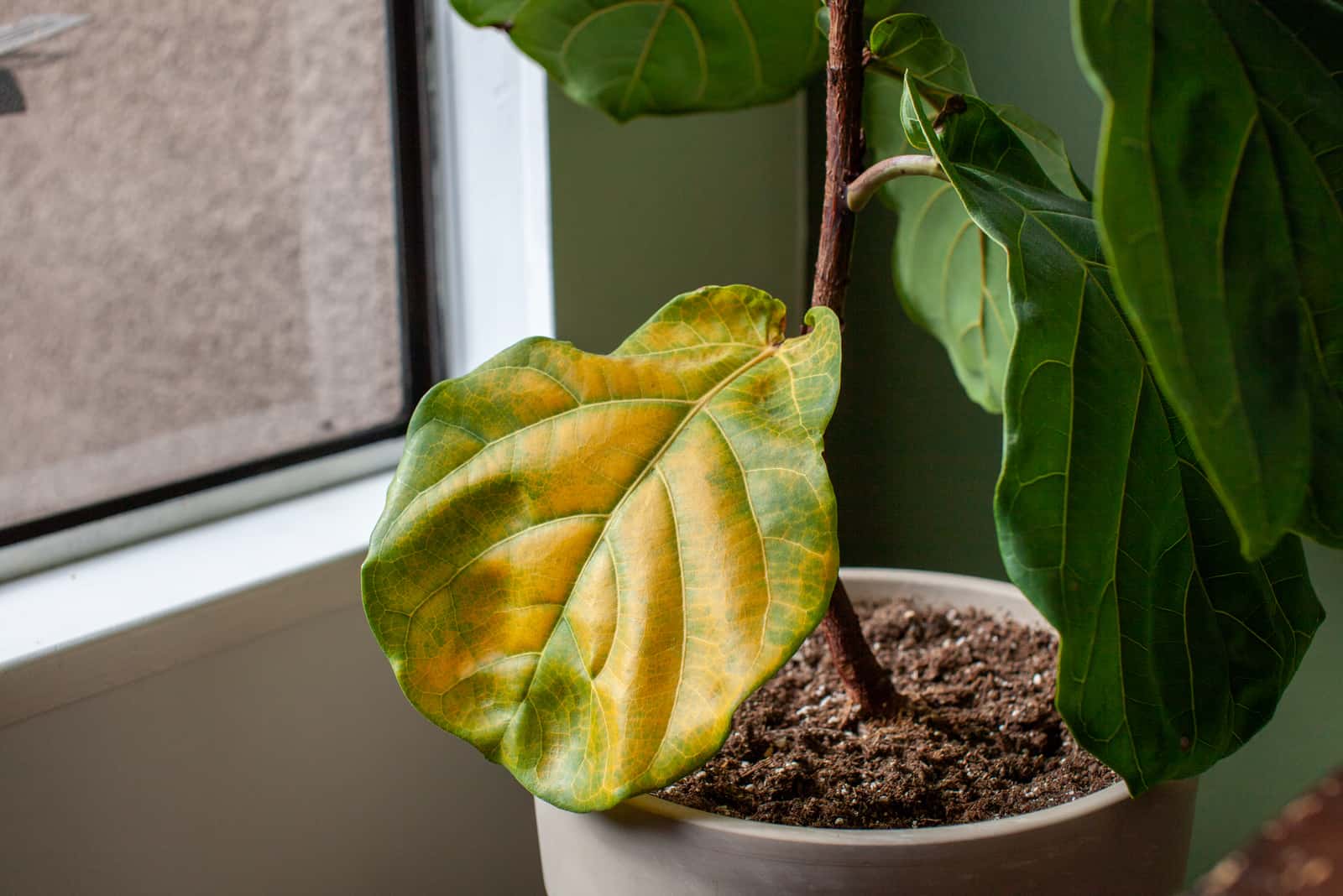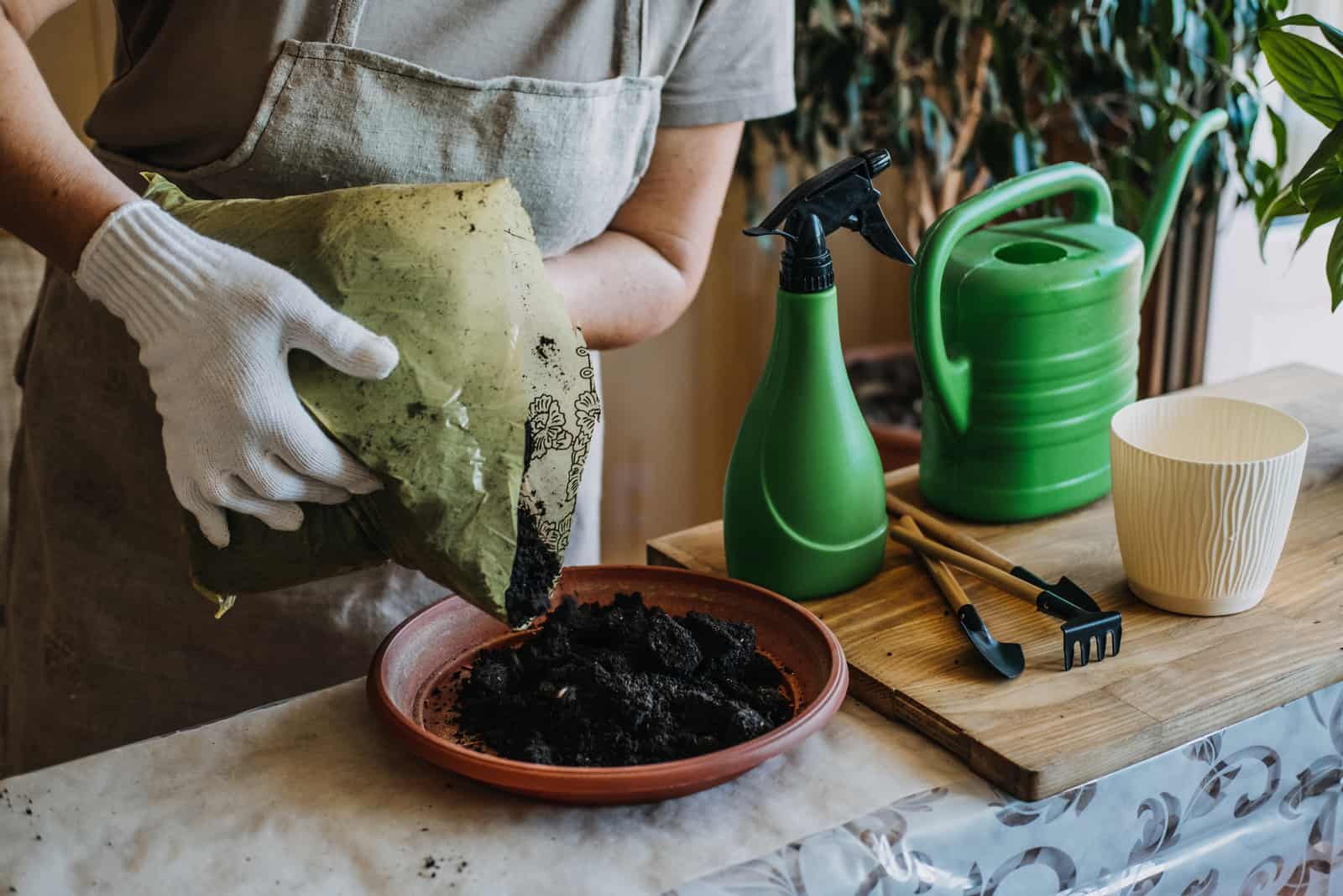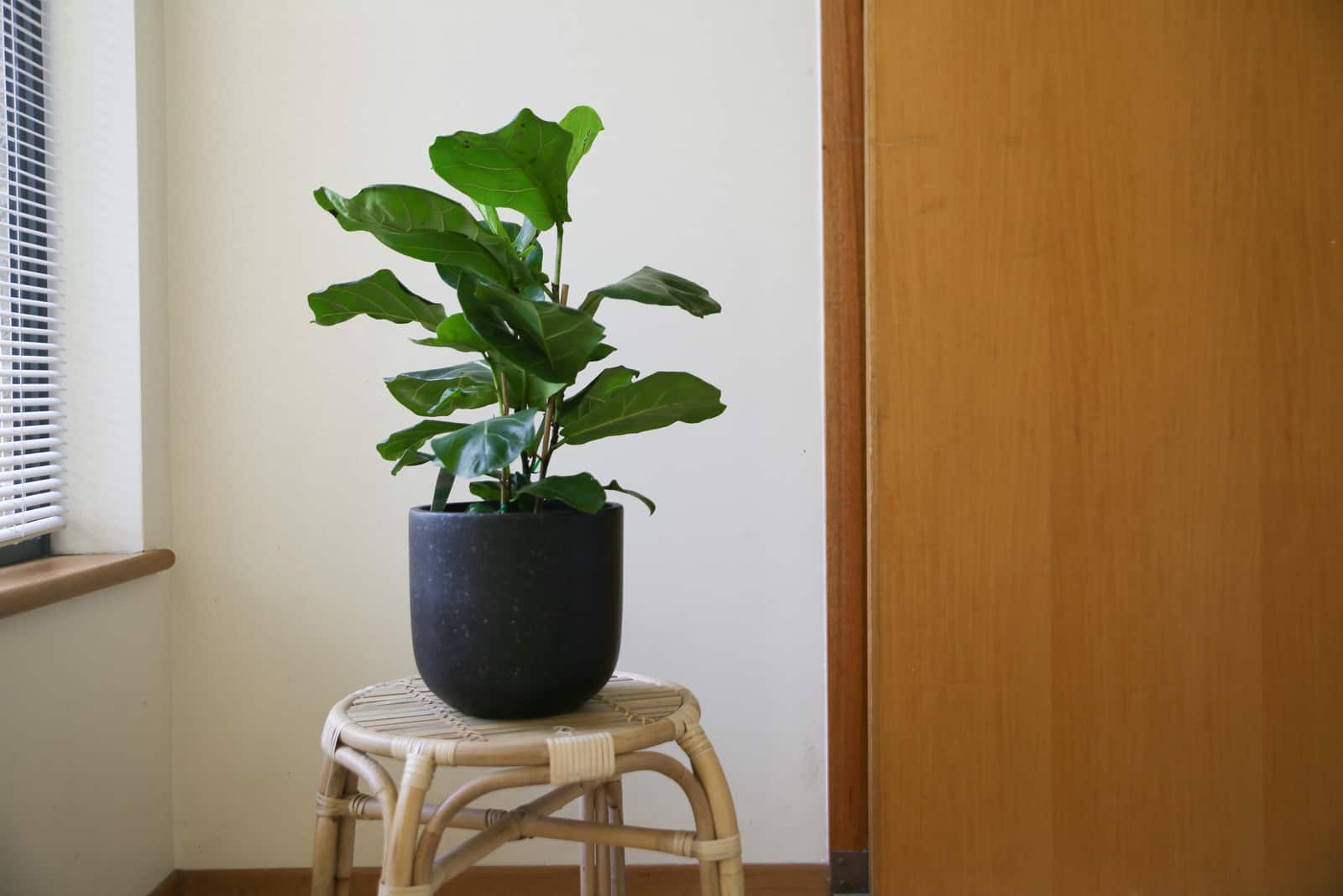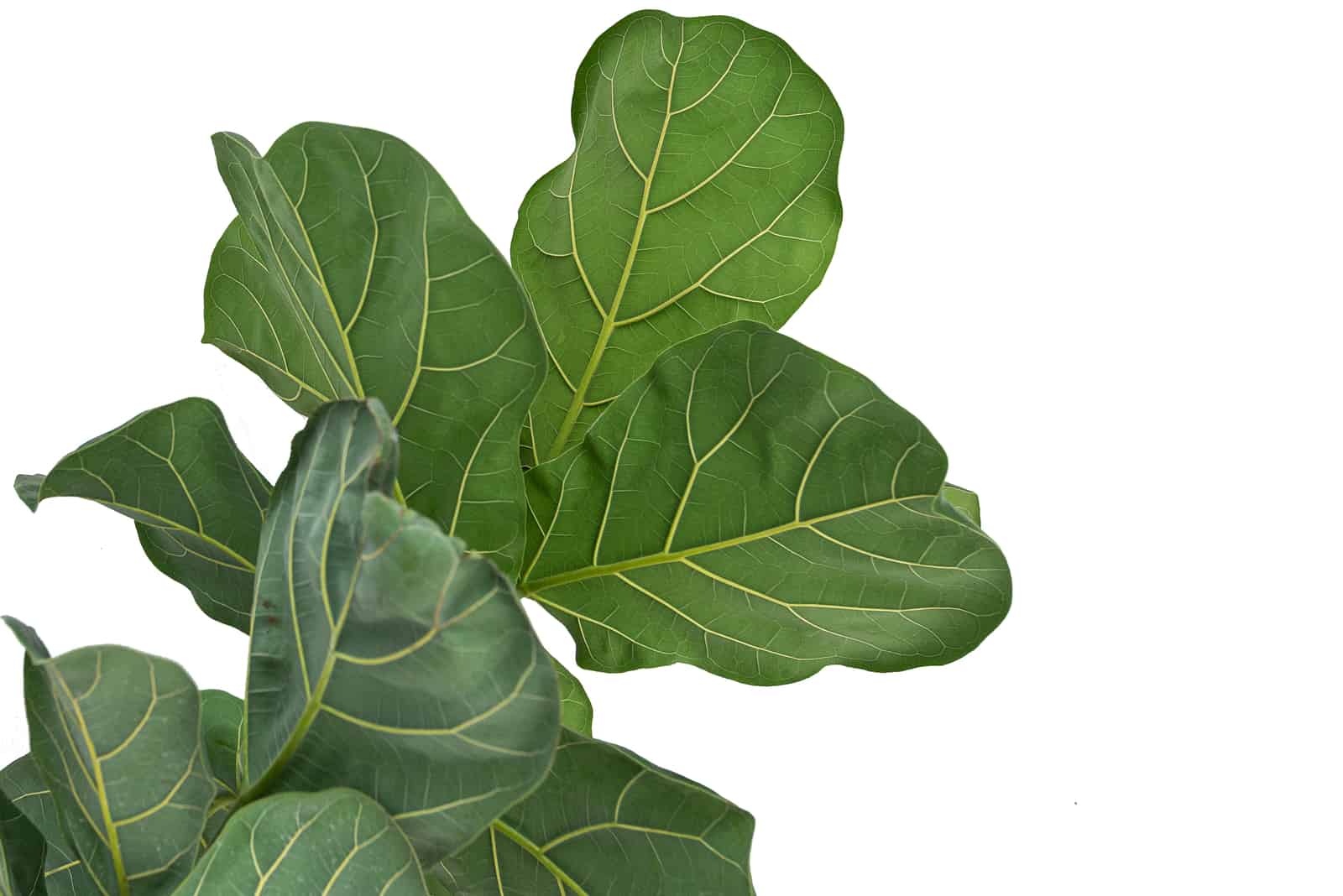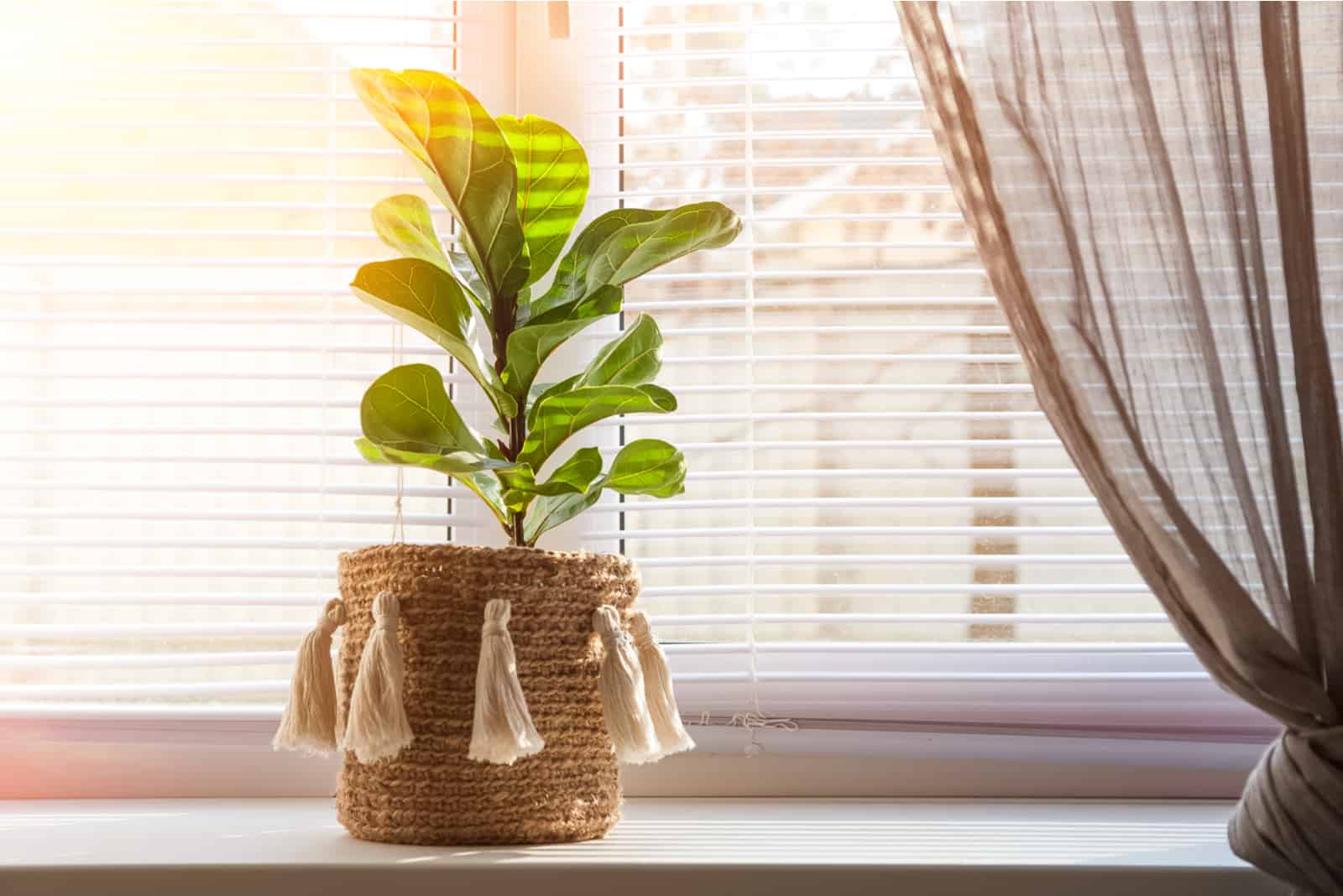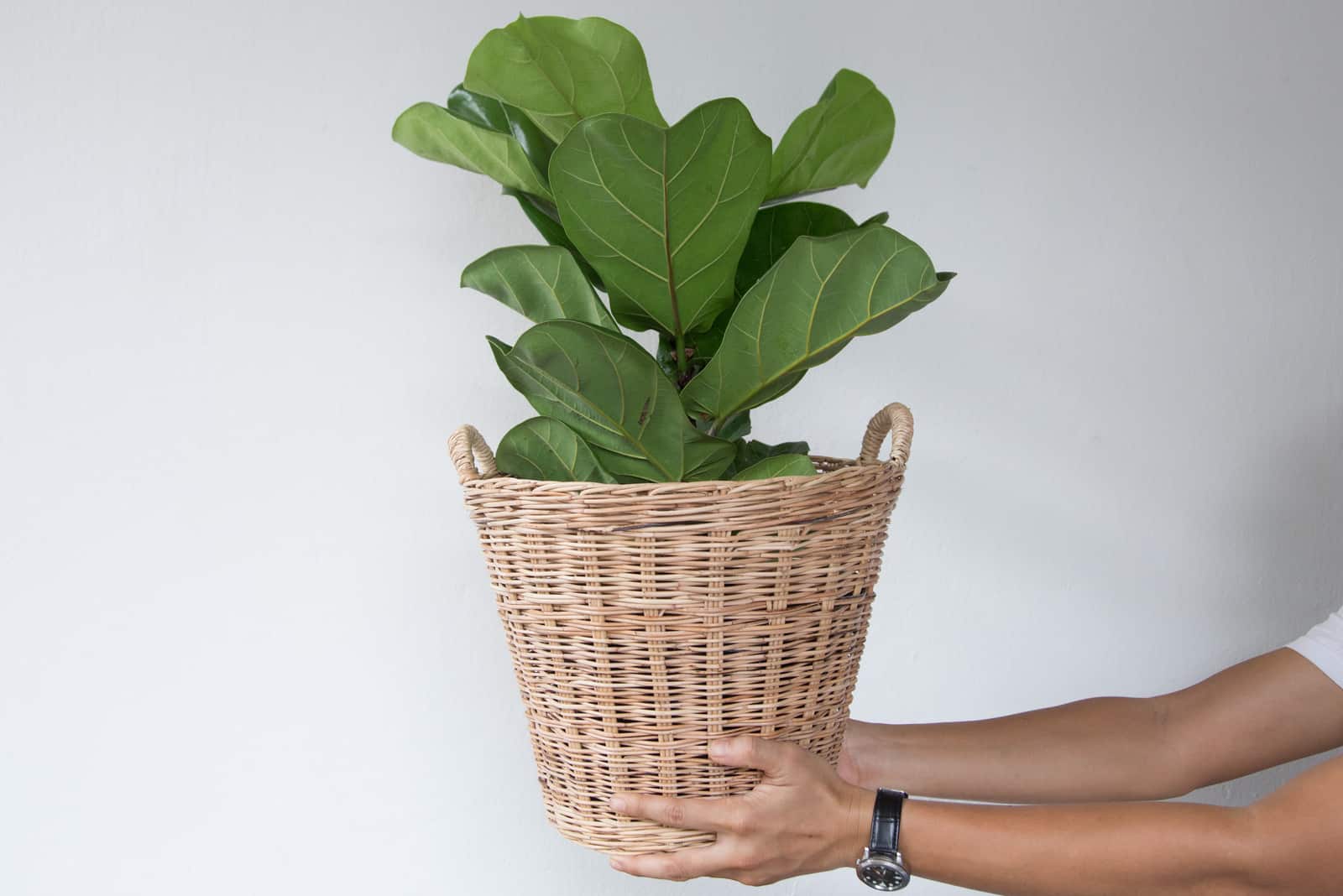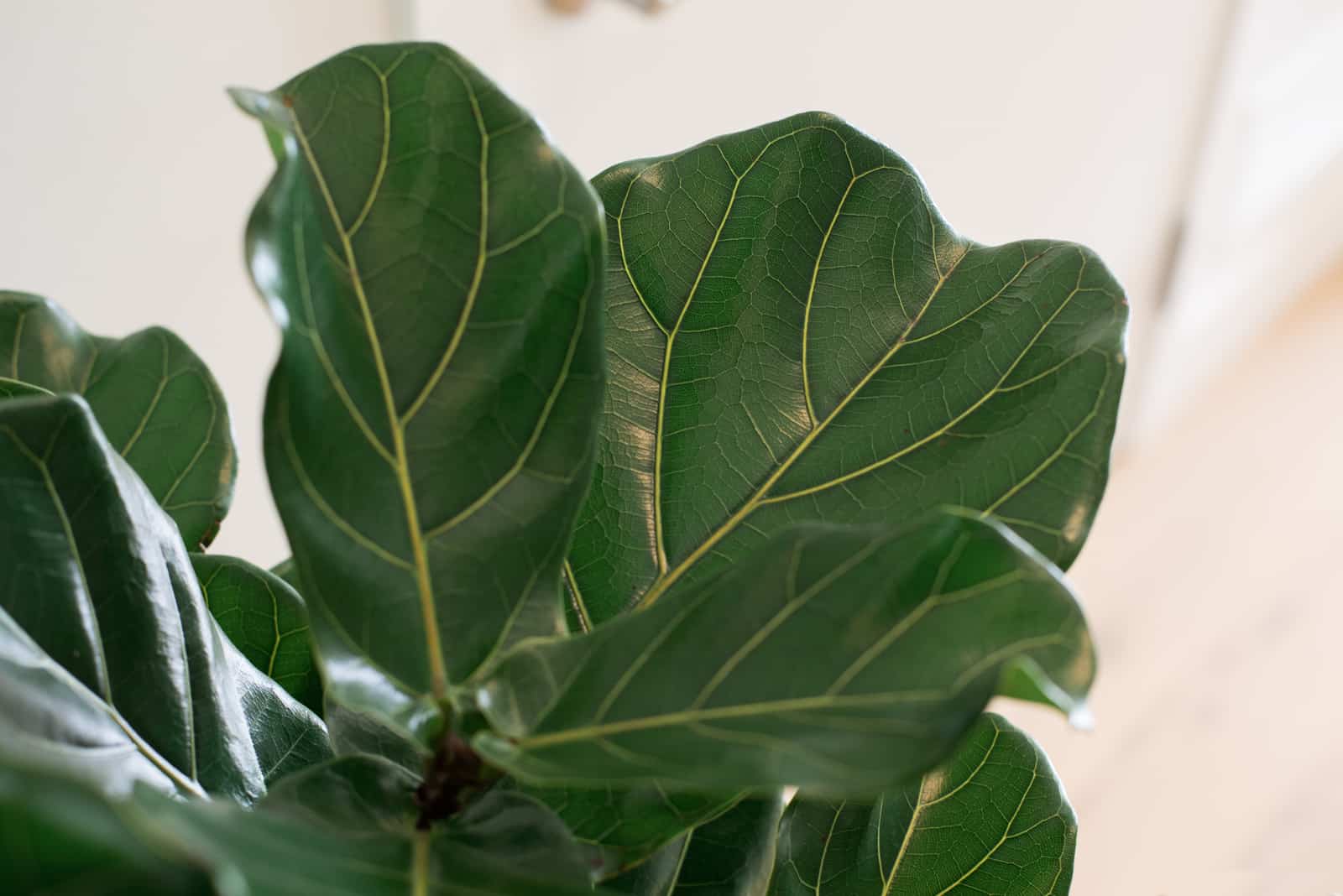If you are an experienced plant grower, leaf curl isn’t something to worry about too much.
However, for beginners it may be a bigger problem, especially if you don’t react in time.
It can be very tricky to determine the cause of curling because pretty much any plant care mistake can lead to it happening.
In most cases, curling comes with other symptoms, which I would call it a blessing in disguise because the sooner you determine the cause, the faster you can fix it.
For beginners to learn and experienced growers to revise, I have made a complete list of all the causes of fiddle leaf fig leaves curling.
I will show you everything in detail, and also how to solve the problem. In other words, I’ll show you how to prevent it from ever happening again!
Let’s get started!
Reasons For Fiddle Leaf Fig Leaves Curling
When it comes to plant care, you must pay equal attention to each aspect if you want your plant to grow as healthy as possible.
The same applies to the fiddle leaf fig; it may face many issues, and will display many signs if something is wrong.
For example, both overwatering and underwatering can cause leaf curl, just as both too much and too little light will also affect the plant.
Low humidity, too much fertilizer, lack of nutrients, the type of water you use (yes, that too), incorrect potting mix, and even pot size can all cause issues, including curling leaves.
Let’s get into details!
Root Rot Due To Overwatering
It’s very easy to overwater your fiddle leaf fig, which is why it’s so important to be aware of the signs.
There are various causes, including sticking to a watering schedule too closely, excessive water usage, not allowing the soil to dry out enough between waterings, or even using the incorrect watering technique.
Overwatered soil means that excess water has been retained for too long.
It would be perfect if the excess water came out of the drainage holes after each watering, but when air spaces clog, drainage holes clog too, which means they become useless.
At this point the conditions for the spread of fungi are ideal, and they will eat the roots and eventually cause root rot.
Fiddle leaf fig plant roots require oxygen in order to grow properly, and they supply water and nutrients to the other parts of the fiddle leaf fig, including its leaves.
With no access to nutrients or water, rotten roots cause the leaves to curl and become dehydrated.
Signs Of An Overwatered Fiddle Leaf Fig
Here is a list of the signs of an overwatered Ficus lyrata:
• Curly leaves: As mentioned above, leaves may curl if the soil is waterlogged.
• Yellow leaves: When the lower leaves of the fiddle leaf fig tree start turning yellow, you should check the roots.
• Droopy leaves: Leaves need energy to grow, and when the roots aren’t providing it the leaves will start falling.
• Stunted growth: If your plant doesn’t produce new leaves, you might want to check the moisture levels.
• Brown spots: The surest signs of overwatering are brown spots on the leaves.
Underwatering
Don’t expect your plant to grow if you delay watering for too long.
According to scientific research, when a plant is submerged its turgor, a biological factor that makes the tissue of fiddle leaf fig plants rigid, is lost. The leaves begin to curl when the tissue isn’t firm.
Although the banjo fig may be able to tolerate different conditions, it won’t grow well if left without water for an extended period.
Of course, plants lose water faster during summer due to high temperatures, so we often forget to check on them.
Signs Of Underwatered Fiddle Leaf Fig
As well as curling leaves, other signs that your Ficus lyrata isn’t receiving enough water include:
• Leaves wilting: The less you water your fig tree, the less water pressure plant cells have. As a result, the leaves start wilting.
• Brown spots and burned tips: You may frequently see brown spots and burned tips after the curly leaves.
• Leaf drop: When your fig tree lacks water for an extended period, it may begin losing leaves to save itself. This is extremely dangerous because the plant can’t perform photosynthesis without leaves, which results in death.
Low Humidity
Dry air and low humidity may also affect water evaporation from the soil.
If the roots don’t have enough water, they can’t supply the leaves and respond by curling.
Why does this happen? Simply, the leaves reduce their surface area to conserve as much water as they can.
Investing in a hygrometer is the best way to check if humidity has caused the curling. Anything lower than 30% requires a quick reaction.
Read on to learn how to increase humidity.
Nutrient Deficiency
Just like any other plant, the fiddle leaf fig requires a certain concentration of Nitrogen, Phosphorus, and Potassium (3-1-2) to thrive.
The right concentration of each nutrient is essential because the plant transforms them into sugar via photosynthesis.
In other words, fiddle leaf figs use nutrients to produce food, and curling leaves result from malnutrition.
There are three possible causes of nutrient deficiency. The first cause is a lack of nutrients in the soil.
Another reason may be diseased roots, which can’t uptake the nutrients.
The third reason may be a lack of light; the fiddle leaf fig needs enough light to perform photosynthesis.
Overfertilization
Many beginner growers think that more fertilizer means faster growth. That’s partially true, but if you add too much fertilizer your plant won’t grow fast.
Even though fertilizer promotes a healthier and faster growth rate for the plant, overfertilization or continuous feeding will have the opposite impact.
Overfeeding means creating a higher concentration of detrimental salts and nitrogen than the fiddle leaf fig requires, which results in so-called mineral buildup.
Too many nutrients will cause the fiddle leaf fig leaves to curl, slow down their growth, and change color.
We use the term “feeding” when referring to enhancing plant metabolism. Although the roots will deliver the nutrients to the leaves in the beginning, they will stop working over time as they can’t bear the excess fertilizer.
Temperature Shock
The leaves are most likely to curl downwards if your plant suffers temperature shock.
High temperatures might help your fiddle leaf fig thrive. Still, anything above 80 degrees Fahrenheit may negatively impact the plant, and even be lethal if left untreated.
When leaves are exposed to extreme temperatures, they are unable to perspire and eventually become dehydrated because the heat lowers moisture.
As you can see, the majority of problems with the plant’s looks are brought about by unfavorable conditions.
Remember that air conditioners and cold drafts may also stress your plant and cause more serious problems than the leaf curl.
Type Of Water
While it is quite typical to use tap water to water indoor plants, particularly in large cities, tap water can occasionally include dangerous minerals and chemicals.
It’s possible that tap water has additives such as salts, fluoride, or calcium carbonate.
For example, too much calcium carbonate and salt can accumulate in the soil, clogging the roots and forcing them to release the water they have absorbed back into the soil.
Fluoride stops photosynthesis, on the other hand.
Your fiddle leaf fig cannot produce the glucose it needs to produce oxygen without photosynthesis.
Yellow, dry, and curly leaves happen as a result of using the wrong type of water.
You might also notice white, powdery areas on the banjo fig’s stems and leaves.
Light Exposure (Too Much Or Too Little)
The healthy growth of fiddle leaf figs depends on the amount of light the plant receives.
Most houseplants require the same light level, but are able to tolerate slightly lower or higher levels.
These Ficus plants are light-lovers, and they appreciate having as much light as possible.
However, direct sunlight isn’t good for them.
Direct light affects photosynthesis-dependent plant cells. There is no possibility for regeneration if your banjo fig is exposed to direct sunlight for a long period of time because its leaves will curl and fall off.
Too much light can cause banjo fig leaves to curl away from the light source.
Low light will also have a negative impact on your fiddle leaf fig by preventing photosynthesis.
Fortunately, it’s simple to determine whether light is the issue for when the leaves curl.
Leaves develop or expand toward the light source, so your banjo fig’s leaves are probably not getting enough sunlight if they are curling.
Diseases
Ficus lyrata plants are extremely susceptible to fungal infections.
If your fig suffers from any fungal infections, it will develop yellow, curling leaves and brown spots.
You may need to differentiate between a bacterial infection and root rot.
In the case of root rot, the lower leaves of the banjo fig are the first to display changes.
On the other hand, if the entire plant displays spots, yellowing, or wilting, it is suffering from a bacterial infection.
Pest Infestation
It’s not uncommon to encounter pests on the undersides and surfaces of leaves.
Mealybugs, spider mites, whiteflies, and aphids target fig trees.
These intruders can cause serious damage, especially if they are seen hiding behind freshly emerging leaves.
If you’re providing your plant with the necessary care, but still see a lot of pests, this is probably the reason your fig tree plant’s leaves are curling.
Pests suck out the nutrients essential for the healthy growth of leaves.
If the infection is serious it may stop the food flow, and the leaves will respond by curling and drooping.
Pests are difficult to find because they are typically concealed on the undersides of the leaves. It’s advisable to invest in a portable LED flashlight for routine plant inspections.
However, I suggest using a magnifying glass if you suspect spider mites are the invaders.
Incorrect Potting Mix
The Fiddle leaf fig despises compact soil that isn’t well-draining or well-aerated.
Roots require well-aerated soil to provide them with the necessary oxygen. Poor soil can also promote bacterial or fungal development, salt or chemical buildup, and other issues.
Banjo fig leaves will curl if you use the incorrect soil type.
It will be difficult for the roots to adequately transport water and nutrients to the other parts of the plant in this case.
If the roots stop working the plant will struggle to grow and eventually die.
Incorrect Pot Size
When you are repotting a banjo fig, you need a larger pot – but not too large.
An overly large pot will make the Ficus lyrata more prone to fungal infections, underwatering, and mineral buildup.
If the pot is too large, the soil in it will hold an excessive amount of moisture and minerals, which means that it’s easier to overwater.
Your fig will become pot-bound if the pot is too small, and if there isn’t enough soil in the pot your banjo fig won’t receive enough nutrients and the root system will stop working.
As a result, the leaves will curl.
Solutions And Prevention For Fig Tree Leaves Curling
Enough with the negativity! It’s time to take some action and put things right again.
Let’s find out how to solve the curling issue, and also how to prevent it.
Change Watering Habits
It can be challenging to determine when this plant needs watering, even for experienced gardeners.
The biggest problem is sticking to the watering schedule too closely. Additionally, the water type you use for plants is also an essential part of plant care.
Finally, the watering technique you use is also important.
I know this may sound confusing, so let’s discuss everything in more detail.
Watering Schedule
Your fig tree requires more watering during the growing season and when temperatures are high. The amount of water your fig tree needs changes due to faster water evaporation in the soil.
There are three ways to check if your fig tree needs watering.
A rule of thumb is to wait until the top 2 inches of the topsoil is dry.
The first way to check if it’s time to water your banjo fig is by using your finger.
Stick it in the topsoil, and if it feels dry you can proceed with watering.
If the soil is still wet, check again in a few days.
Another way is by lifting the fig tree’s pot; a lightweight pot indicates a lack of water. The heavier the pot, the longer you should wait for the next watering.
Take a look at the topsoil and pay attention to its color. If the topsoil is dark, your fig has enough water.
The safest way to check the moisture level is by using a moisture meter. It won’t cost you much and it’s highly accurate.
Type Of Water
We have seen that using the wrong type of water can also be the cause of curling, so we must now discuss the type best for you fig.
I know that the easiest thing would be to simply pour water from the pipe to water your fig tree, and though tap water works perfectly for many plants, that is definitely not the case with fiddle leaf figs!
However, this has nothing to do with the water’s quality; some plant species are incredibly sensitive to even the smallest amounts of chlorine in the water.
The best thing would be if you could use rainwater because that’s the water type these plants get in their natural habitat.
Alternatively, use filtered or distilled water.
Watering Method
Many gardeners don’t give the watering method they employ much thought, but learning more about them definitely helps.
You can choose between bottom watering and watering from above.
When it comes to the fiddle leaf fig plant, I would go with bottom watering to avoid getting water on the leaves.
You can place your banjo fig in the sink and fill it halfway with water.
Wait for a few minutes and then lift the pot. Leave your fig to drain well because the roots won’t survive if they sit in water for too long.
Adjust The Lighting
Your fiddle leaf fig will benefit from direct morning or afternoon light.
At midday, your fig needs a lot of indirect light.
You need a window that is primarily unblocked on the eastern, western, or southern sides because you don’t want nearby trees or structures to completely shade the window.
If your banjo fig is positioned right in front of the window, a north-facing exposure can also work fine if there is enough room and nothing is blocking the sky.
If you want to position your Ficus lyrata in a south-facing window, you should gradually get it accustomed to being in direct sunshine for many hours, unless you want its leaves to curl.
However, I suggest always being on the safe side and ensuring it gets plenty of indirect sunlight.
The amount of light your fig tree needs to thrive depends in part on its size because the amount of light a plant needs will increase as it gets larger.
Adjust Humidity
This type of Ficus can tolerate different levels of humidity. You can keep humidity levels above 30 and below 65% and have a healthy plant.
Consider getting a hygrometer, which is a special gadget for detecting humidity, before your plant exhibits any signs of dissatisfaction.
However, if the humidity drops below 30% you’ll need to increase it somehow, and this is especially important if you live in drier climates.
Luckily, there are many ways to create a humid environment.
A humidifier is a practical tool that can assist you in keeping the right level of humidity.
You can also place your fig tree next to other plants. If you grow pothos plants, these two will have lots of fun together and provide perfect humidity for each other.
Another method is to place a humidity tray below the fig’s pot. Add some pebbles and place your fig above it, just make sure its roots aren’t sitting in water.
Alternatively, you can change the plant’s location to a room with high humidity, such as a kitchen or bathroom.
You can also mist your banjo fig regularly.
Change Fertilizing Habits
There are many pitfalls when it comes to fertilizing these plants. Most houseplants are dormant during the winter months and don’t use energy, so they don’t need additional food.
You may have also been fertilizing too frequently, which leads to overfertilization.
Finally, you may have been using the wrong type of fertilizer.
So, what we need is a perfect fertilizing schedule and the right type of fertilizer.
I mentioned earlier that this Ficus plant requires an npk ratio of 3-1-2. Use a liquid fertilizer with this npk ratio diluted to half strength. This is the best way to avoid overfertilization.
I fertilize my fig tree every other time I water. My phone comes in really handy for this purpose – reminders are great!
Adjust Temperature
In this case, what you need is a precise temperature reading. A thermometer serves this purpose, and you can simply place it in the room where you keep your banjo fig.
Ideal temperatures for this Ficus plant range from 65 to 75 degrees Fahrenheit.
If the room where you keep your fig doesn’t have temperatures within this range, I suggest moving it to another room.
Although you can increase temperatures with heaters or decrease them with air conditioners, I highly recommend avoiding these devices.
They will likely stress your fig, so it’s easier to move the plant than deal with it dying.
Remove Pests
You can remove any uninvited visitors with a couple of methods.
The first option is to buy a pest deterrent from a plant store; pesticides are quite effective.
However, you can achieve the same results by using natural repellents.
Rubbing alcohol, neem oil, soap or dishwasher liquid, and garlic spray are just a few examples of things you can use, and I’m sure you have most of them in your house already.
Natural repellents you want to utilize should be diluted with water before applying them to the leaves of your fiddle fig tree.
Choose New Potting Mix
While banjo figs can thrive in a variety of soil conditions, the more closely you mimic their natural habitat, the healthier your plant will be!
One of the best options for fig soil is using either a substrate made for succulents or a standard potting soil with perlite or bark added to improve drainage.
When it comes to the potting mixes above, they have a good balance of well-draining and water-retaining materials, but the problem is that the pH in these mixes doesn’t meet the fig’s requirements.
So, the first material you should add to improve the soil mix is vermiculite. It prevents the soil from becoming compact and has a pH of about 7, which makes it perfect for this Ficus plant.
You can also add compost, coco coir, worm castings, and various manure.
Each of these substances contains a variety of nutrients and has a pH that makes it suitable for various plants, including the fiddle leaf fig.
Change Pot Size
Your plant won’t concentrate on growing new leaves if placed in a pot that’s too large because it will be too busy growing roots to fill up the empty space!
In the case of a rootbound fiddle leaf fig, you’ll need to repot it in a slightly larger pot.
Below you will find a guide for repotting a Ficus lyrata plant.
Repot Your Fiddle Leaf Fig
Repotting a fiddle leaf fig shouldn’t be a problem if you prepare everything and follow the proper steps.
Here is a list of indicators for repotting:
• Roots coming out of the drainage holes
• Stunted growth
• The soil isn’t drying or dries too fast
• Newly bought fig tree
Prepare an adequate pot, new soil, a sharp and sanitized knife, and your nerves!
Here are the steps:
1. Your fig should be taken out of its pot; hold it by its base and gently tap the pot.
2. You should now remove the excess soil, and you can wash the soil down so that the roots are completely exposed.
3. When you repot the fiddle leaf fig plant, cut off the long outside roots to promote growth and development. Ideally, you should trim 2 inches, but the exact amount will depend on how big your plant is.
4. Fill the new pot with fresh soil and put your fig in the center. Add more soil until the entire root ball is covered.
5. Water your repotted fig to help the soil settle.
Propagate Your Fiddle Leaf Fig
If your fig has suffered severe damage, there is one more way to save it.
In case of root rot, sometimes you will have to discard the plant. However, if there is a branch with nodes attached you still have hope.
One of the best ways to expand your plant collection is by propagation, and the fig tree is pretty easy to propagate.
Just cut off a branch and root the fig cuttings in water or soil.
Place the banjo fig cuttings in some water and wait until you see new roots.
Plant them in an appropriate potting mix, and new growth should occur soon.
Wrapping Up
Now you know all the possible causes of changes in your banjo fig.
I am aware that there are many possible reasons for fiddle leaf fig leaves curling, and that it can be challenging to determine the specific one.
However, remember that plants are just like humans; the more you care for them, the more they will thrive!
Just follow the guidelines we provided above, and you won’t be dealing with any fig tree issues ever again.
Until next time!
Like this post? Share or pin it for later!

